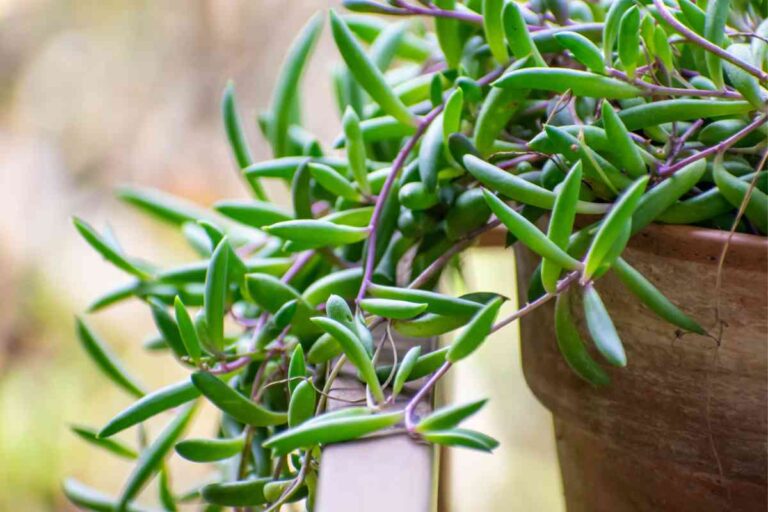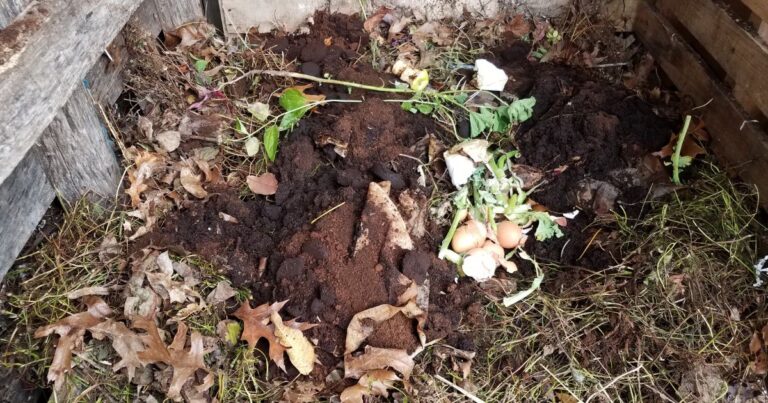What to Do When a Cactus Refuses to Bloom: Expert Advice
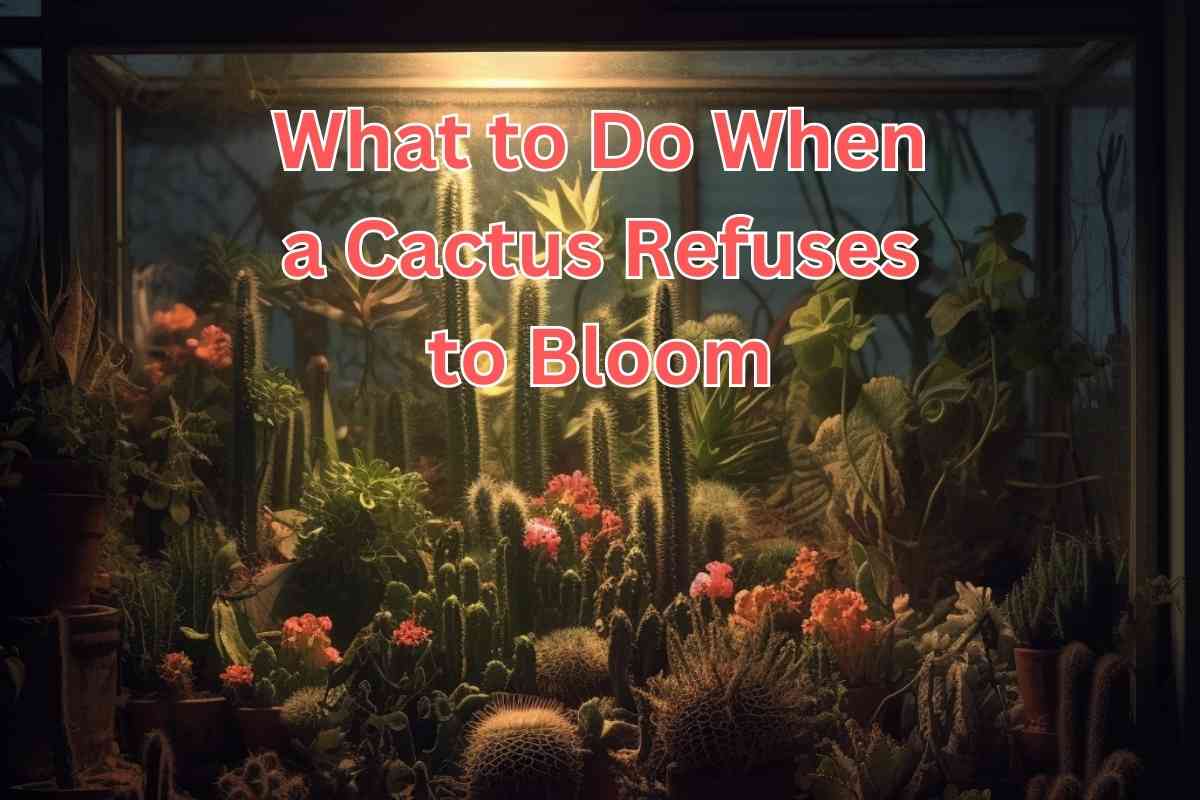
There’s something magic about a cactus bloom, especially when you can pull it off inside. But what to do when a cactus refuses to bloom? I’ve been there, and I know it can be frustrating
Don’t worry, there are a few things you can do to help your cactus bloom.
What do I do when a cactus refuses to bloom?
When a cactus refuses to bloom, make sure that its lighting, soil, and water needs are met. Try fertilizing, fluctuating nighttime and daytime temperatures, reducing watering, and introducing a dormancy period to encourage your cactus to bloom.
Cactus blooms are mysterious. Some happen at night, some only when the cactus is a decade old or more, and some after special environmental conditions. I’ll unwrap the reasons that cactus bloom or don’t so you can get those gorgeous flowers on your cactus.
Planning a low-water outdoor garden with lots of flowers? Don’t forget to include these succulents, which are perfectly acclimated to hot sun and dry conditions.
Want a general guide on care for succulents of all kinds, including cacti? Check out this thorough indoor and outdoor care guide.
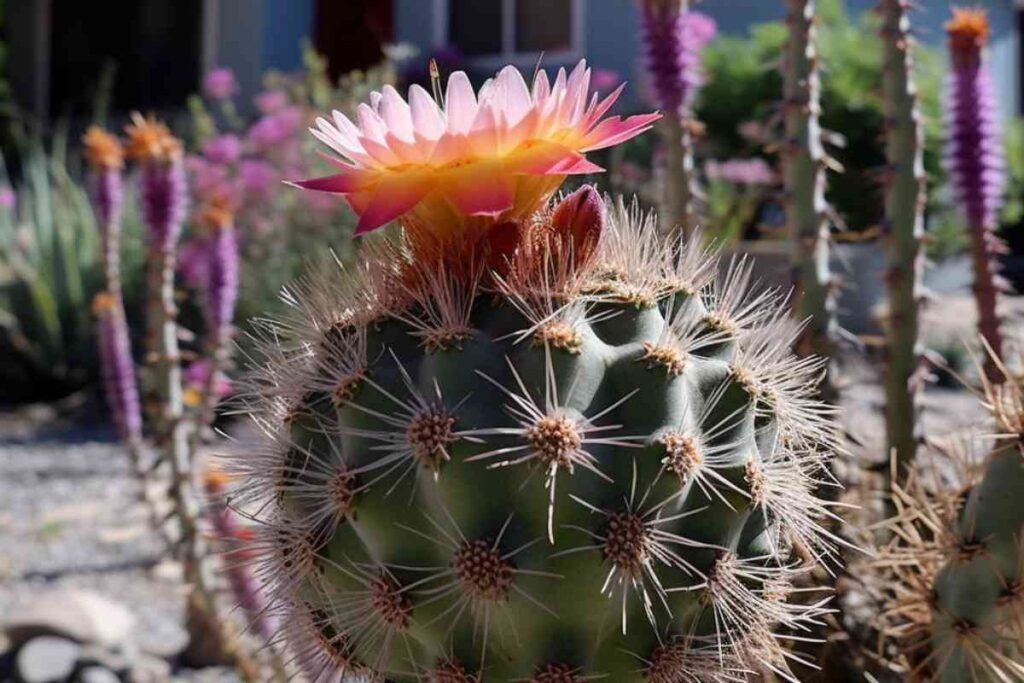
When do Cacti Bloom
Cacti can bloom at different times depending on their species and environmental conditions. You may be desperately waiting for a year-old cactus to bloom when it doesn’t bloom until it’s three or four years old. Knowing when your cactus should bloom is key to determining whether it should be blooming.
- Seasonal blooming: Many cacti have specific blooming seasons associated with certain times of the year. For example:
- Spring bloomers: Some cacti, such as Easter Cactus (Hatiora gaertneri) and certain species of Opuntia, tend to bloom in spring.
- Summer bloomers: Several cacti, including Echinopsis species and some Mammillaria species, often bloom during the summer months.
- Fall bloomers: Certain species, like Thanksgiving Cactus (Schlumbergera truncata) and some species of Echinocereus, may produce flowers in the fall.
- Species-specific variations: Each cactus species has its unique blooming patterns. Some species may bloom only once a year, while others may have multiple blooming cycles throughout the year.
- Environmental factors: Environmental conditions, such as sunlight exposure, temperature, and humidity, can influence blooming in cacti. Adequate light, warm temperatures, and a slight temperature drop during the nighttime (typical in fall and winter) can stimulate blooming in many cactus species.
- Maturity and health: Most cacti require a certain level of maturity before they can produce flowers. Young cacti typically focus on establishing their root system and developing foliage before allocating energy to flower production. It’s common for young cacti to take a few years to reach the flowering stage. Some cacti may start blooming when they are a few years old, while others may require a longer time, possibly even a decade or more.
Water and Soil for Blooming Cacti
Ideal water and soil won’t make a cactus bloom, but incorrect watering and soil conditions will definitely keep it from blooming.
Use a well-draining soil mix specifically formulated for cacti and succulents. The soil should have good drainage properties, allowing water to pass through easily. Avoid heavy, water-retentive soils that can lead to waterlogged roots. Adding inorganic materials like perlite or pumice can improve drainage.

Cacti prefer infrequent but deep watering. Allow the soil to dry out completely between waterings to prevent overwatering, which can lead to root rot. Water thoroughly and let the excess water drain away. Adjust the watering frequency based on the specific cactus species, the season, and the environmental conditions.
Cacti prefer slightly acidic to neutral pH levels. Use water that is low in salts and chemicals, as excessive mineral buildup can harm the plants. If your tap water has high salt or mineral content, consider using filtered or distilled water for watering.
Consider adjusting your watering routine based on the seasons. Cacti generally have a period of reduced growth or dormancy during colder months. Reduce watering during this time to simulate their natural environment and promote blooming when the growing season resumes.
Cacti thrive in low-humidity environments. Avoid placing them in areas with high humidity, such as bathrooms or kitchens, as this can inhibit blooming. Adequate airflow and good ventilation around the plants can help prevent excess moisture buildup.
Lighting for Cactus Blooms
Artificial Cactus Lighting

Unless you have AMAZING natural light, you’ll likely need to supplement with artificial lighting to give your cactus what it needs to bloom indoors. I know I did.
Full-spectrum LED grow lights are best for indoor cacti. These lights mimic natural sunlight and provide the necessary light spectrum for flowering. Look for lights specifically designed for plants or those with a color temperature of around 6500K.
Cacti require bright light to bloom. Assess the light intensity provided by your chosen LED grow lights. Cacti typically need 12 to 14 hours of light per day, so ensure the light reaches all parts of the plant evenly. Mirrors or other reflective surfaces can help disperse the light.
Position the LED grow lights 6 to 12 inches above your cacti to ensure they receive sufficient light. Adjust the height accordingly based on the cactus’s light requirements and its response to the lighting. If it seems like it’s getting scorched, move it further. If it seems to be stretching and isn’t blooming, move the light closer.
Maintain a consistent daily light schedule for your cacti to simulate natural lighting conditions. A timer to automate the lighting cycle and ensure your cacti receive the appropriate amount of light each day is a good idea
With dedication and a bit of trial and error, I’m delighted to say that I’ve achieved successful blooms in my indoor cacti collection using artificial lighting. It’s a rewarding experience to witness these vibrant flowers blooming right in the comfort of my own home no matter what the weather is doing outside.
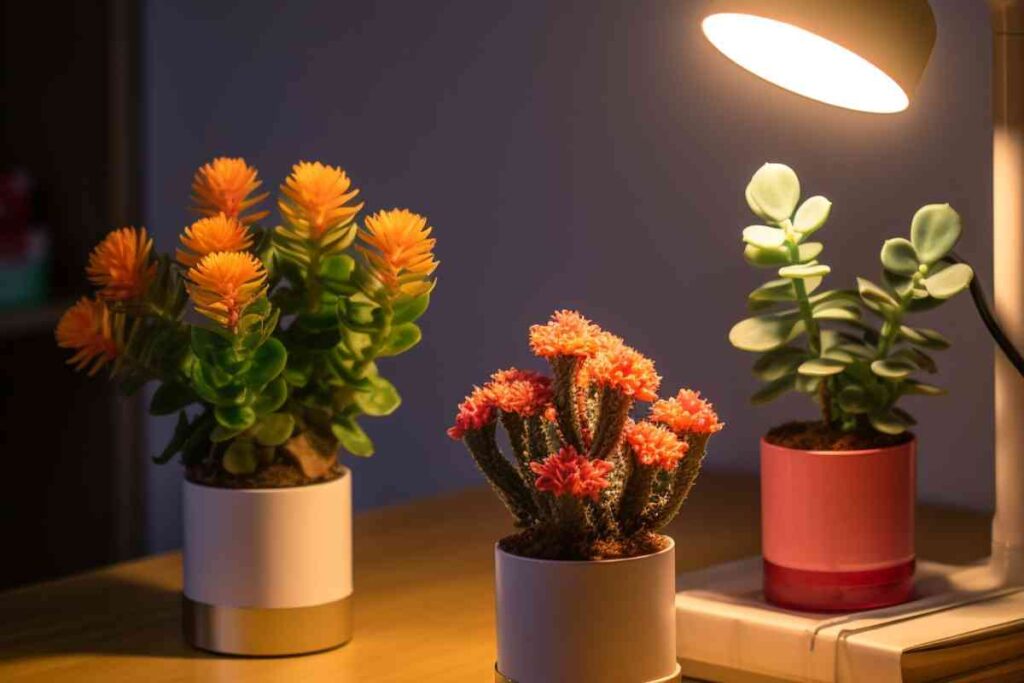
Natural Cacti Lighting to Encourage Blooms
Most cacti thrive in outdoor environments with ample sunlight. Most cacti prefer bright, direct sunlight for several hours each day. They thrive in areas with high light intensity, especially in regions with moderate to warm climates.
Cacti typically require at least 6 to 8 hours of direct sunlight daily to maintain their health and promote optimal growth. However, some cacti can tolerate partial shade for a portion of the day, particularly in extremely hot or intense sun conditions.
When placing cacti outdoors, choose a location that receives the maximum amount of sunlight possible, depending on individual species needs. South-facing positions are often ideal in the Northern Hemisphere, as they receive the most sunlight throughout the day. In the Southern Hemisphere, north-facing positions may be preferable.
How to Fertilize a Cactus to Encourage Blooming
Cacti typically have an active growth period during spring and summer. Start fertilizing when new growth emerges and continue every two to four weeks during this period. Reduce or stop fertilization during the dormant winter months.
Select a fertilizer specifically formulated for cacti and succulents. Look for a balanced, water-soluble fertilizer with a low nitrogen content (e.g., 10-10-10 or 5-10-10). Avoid using fertilizers high in nitrogen, as they can promote excessive foliage growth at the expense of flowering.
Consider using a slow-release granular fertilizer formulated for cacti and succulents. These fertilizers release nutrients gradually over time, providing a steady supply of nutrients to support blooming.
Mix the fertilizer according to the manufacturer’s instructions. Dilute it to half or even a quarter of the recommended strength to avoid overfertilization. Cactus don’t need much fertilizer to prompt blooms.
Water the cactus thoroughly before applying fertilizer. This helps prevent fertilizer burn and allows for better nutrient absorption. Apply the diluted fertilizer to the soil around the base of the plant, avoiding direct contact with the cactus itself.
Pay attention to your cactus’s response to fertilization. If you notice signs of overfertilization (e.g., burned or discolored roots, stunted growth), reduce the frequency or strength of the fertilizer. On the other hand, if your cactus isn’t blooming despite adequate care, you may consider increasing the frequency or strength of fertilization slightly.
Remember, moderation is key when fertilizing cacti. It’s better to slightly underfertilize than to overfertilize.
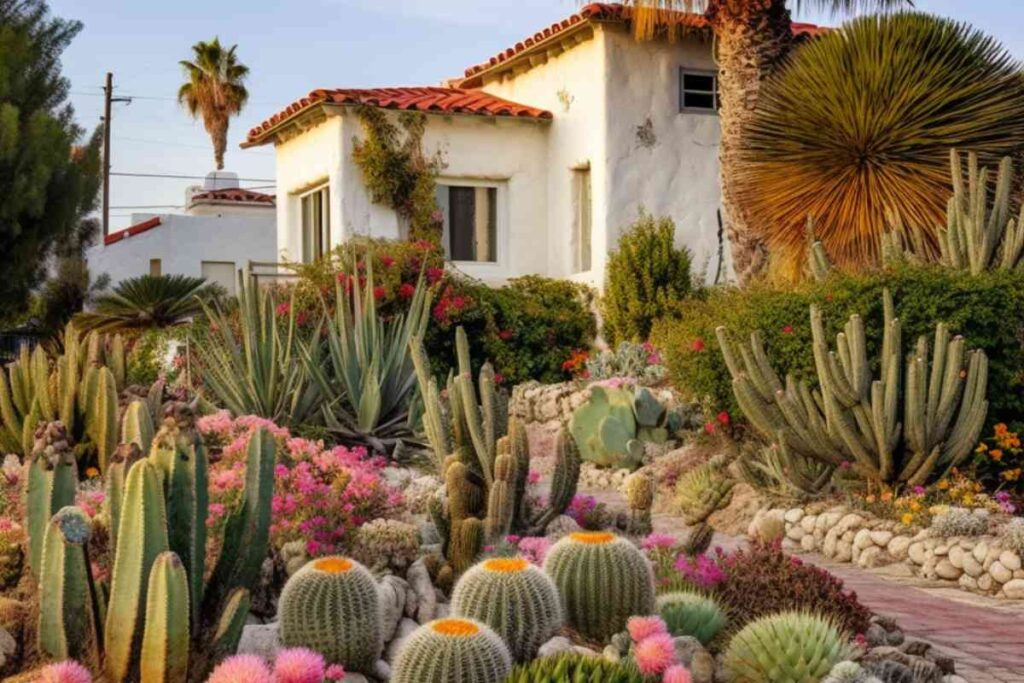
How to Force a Cactus to Flower
Encouraging a cactus to flower requires providing optimal growing conditions and addressing any potential factors that may be inhibiting blooming. That said, there are some tricks to force flowering when all other conditions are correct for blooming.
- Most cacti prefer warm daytime temperatures and slightly cooler nights because these are desert conditions. These temperature fluctuations can trigger blooming. If your cacti are indoors where the temperature is constant, they may not be getting this necessary fluctuation. Try varying the temperature and see if that helps.
- You should always let your cactus dry out between watering. However, a period of even more reduced watering before the anticipated blooming period can stimulate flower production.
- Some cacti require a period of rest or dormancy to trigger blooming. If your cactus species naturally experiences a dormant phase, reduce watering and provide cooler temperatures for a few weeks to simulate this resting period. Then gradually resume normal care, which may prompt the cactus to initiate blooming.
5 Tips for Making Cactus Blooms Last Longer
To prolong the blooming period of a cactus and enjoy its beautiful flowers for a longer time, you can follow these tips:
- Avoid extreme temperature fluctuations or drafts, as this can cause flowers to drop. Additionally, maintaining moderate humidity levels can help prevent flower dehydration and prolong blooming.
- Avoid overwatering, as excessive moisture can lead to rot and flower drop. Water your cactus thoroughly but allow the soil to dry out between waterings.
- Provide balanced nutrition to support healthy flower development and extended blooming. Use a fertilizer specifically formulated for cacti and follow the instructions for application and frequency.
- Remove faded or wilted flowers promptly by gently plucking them off or using clean, sharp scissors. Deadheading prevents the plant from expending energy on seed production and encourages the development of new flowers.
- Once flowers start blooming, minimize moving or disturbing the cactus as much as possible. Physical disruptions can cause flowers to drop. Keep the cactus in a stable location with minimal handling.
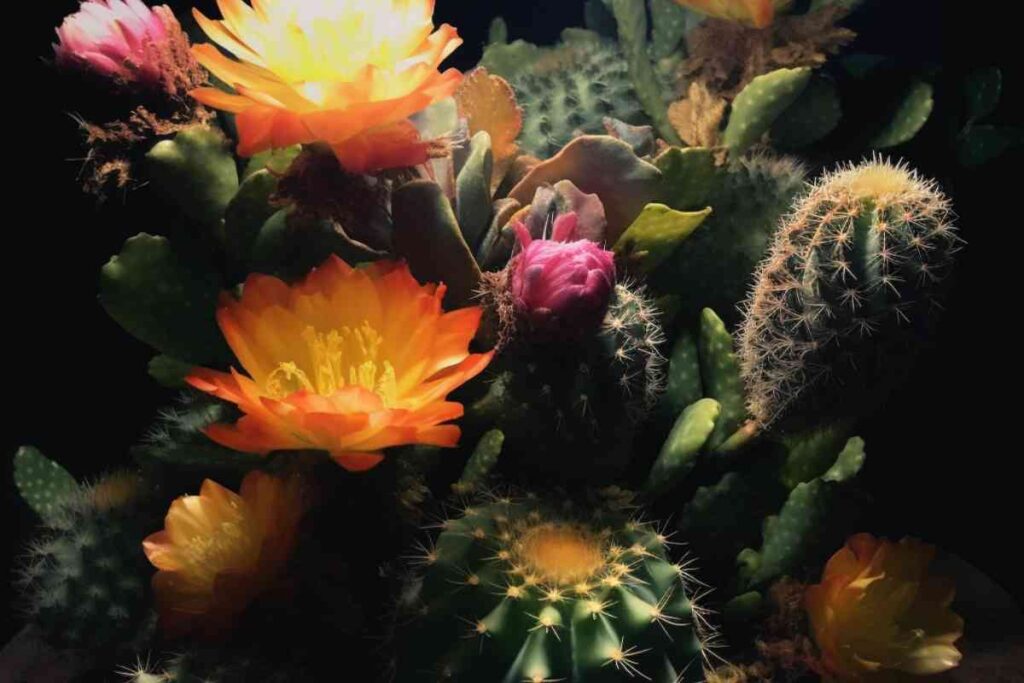
What to Do When a Cactus Refuses to Bloom: Decision Tree
- Is your cactus receiving sufficient light?
- If not sure, assess the location of your cactus and ensure it gets at least 6 hours of direct sunlight per day.
- If it lacks light, consider moving it to a brighter spot or providing supplemental grow lights.
- Is your cactus getting the right amount of water?
- Overwatering can inhibit blooming, so ensure you’re not watering too frequently or allowing the soil to stay consistently moist.
- Underwatering can also hinder blooming, so check if your cactus is getting enough water by assessing the dryness of the soil between waterings.
- Has your cactus entered its blooming season?
- Some cacti have specific blooming seasons. Research the flowering time for your particular cactus species and verify if it aligns with the current season.
- Has your cactus experienced temperature fluctuations or drafts?
- Extreme temperature changes or exposure to drafts can affect blooming. Ensure your cactus is in a stable environment with consistent temperatures and minimal drafts.
- Is your cactus receiving appropriate fertilization?
- Lack of nutrients can impact blooming. Make sure you’re providing a balanced fertilizer formulated for cacti during the growing season, following the recommended dosage.
- Has your cactus been recently repotted?
- Repotting can temporarily disrupt blooming. If you’ve recently repotted your cactus, give it some time to adjust before expecting blooms.
- Has your cactus been pruned or trimmed?
- Pruning at the wrong time can remove potential flower buds. Check if you’ve recently pruned your cactus and ensure it was done during the appropriate time.
- Is your cactus showing signs of pests or diseases?
- Pests or diseases can affect blooming. Inspect your cactus for any signs of infestation or illness and take appropriate measures for control.
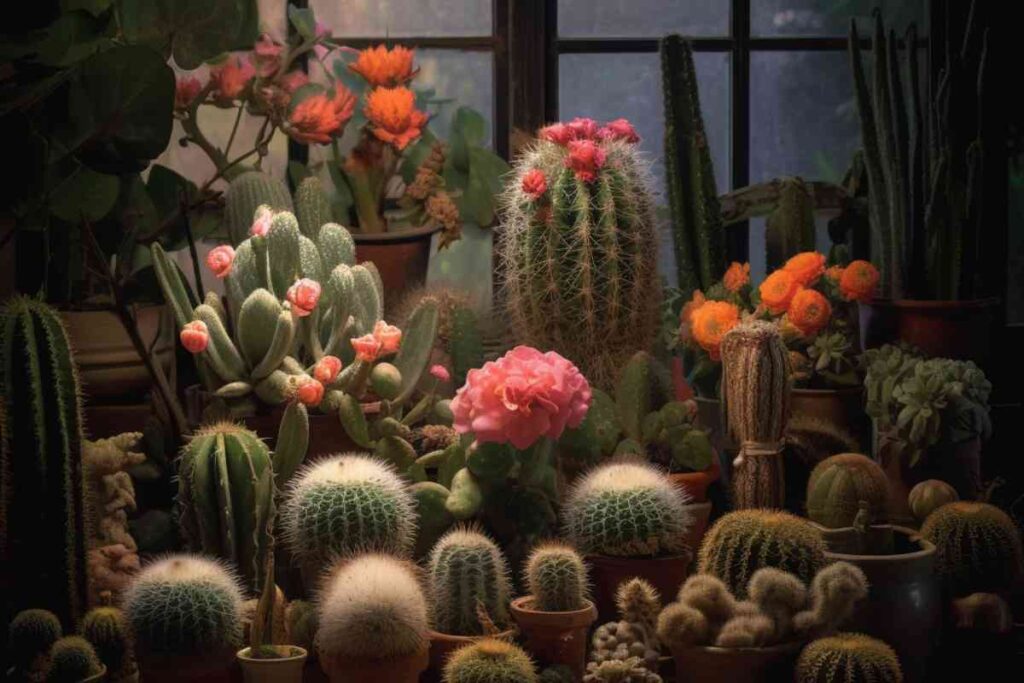
Why Your Moon Cactus Isn’t Blooming
Moon, or Ruby Ball cacti are grafted. Grafted cacti are created by joining two different cactus species together. The process involves taking a cutting or “scion” from one cactus valued for its beauty and attaching it to the rootstock of another cactus, known for its vigorous root system and ability to provide nutrients and support.
The scion, or the grafted portion, is usually a colorful cactus variety that lacks the ability to produce chlorophyll and sustain itself independently. It relies on the rootstock for water and nutrients. The rootstock, on the other hand, is often a hardy and fast-growing cactus species that serves as the base or foundation for the grafted plant.
The grafted “flower” or the scion’s ability to produce blooms depends on its health and integration with the rootstock. If the grafted scion dies or gets damaged, it usually cannot regenerate or grow back from the same spot. This is because the scion lacks the ability to generate new growth on its own and is reliant on the rootstock for sustenance.
In some cases, the rootstock may produce new growth from its own shoots or offsets. These growths are typically from the rootstock and may not have the same characteristics or flower color as the original grafted scion.
Therefore, if your “flower” dies on a moon cactus, it won’t bloom again.
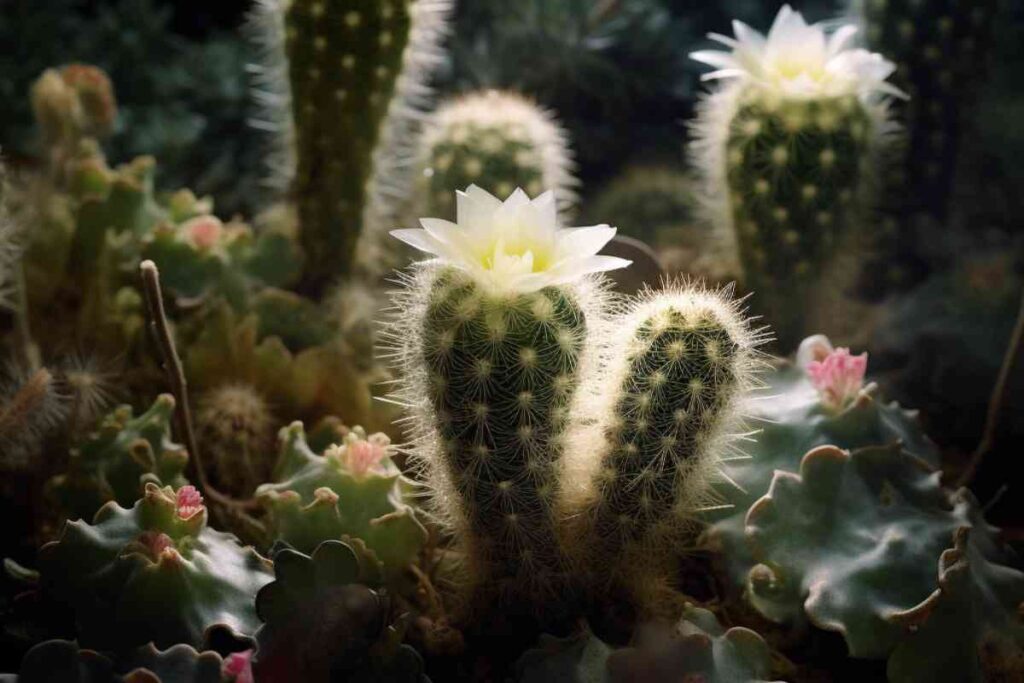
25 Popular Cactus that Bloom
- Christmas Cactus (Schlumbergera): This cactus blooms during the holiday season, typically around Christmas time. It has vibrant flowers in colors like red, pink, white, and even orange.
- Easter Cactus (Hatiora gaertneri): Similar to the Christmas Cactus, the Easter Cactus blooms in spring, around Easter time. Its flowers are usually shades of pink or red.
- Thanksgiving Cactus (Schlumbergera truncata): As the name suggests, this cactus blooms around Thanksgiving. Its flowers come in various colors, including white, pink, and purple.
- Moon Cactus (Gymnocalycium mihanovichii): While known for its colorful and unique shape, the Moon Cactus is a grafted cactus made of two cactus, one of which is yellow, orange, or pink and looks like a flower.
- Rebutia (Rebutia spp.): Rebutia cacti are small and compact, making them ideal for indoor spaces. They have delightful flowers in shades of red, orange, pink, and yellow.
- Orchid Cactus (Epiphyllum): Also known as “Queen of the Night,” the Epiphyllum cactus produces large, stunning flowers in various colors, including white, pink, orange, and red. They often bloom at night and have an exquisite fragrance.
- Fishbone Cactus (Epiphyllum anguliger): This cactus is named for its unique, fishbone-like foliage. It occasionally blooms with delicate, fragrant flowers in shades of white or light pink.
- Rat Tail Cactus (Aporocactus flagelliformis): This trailing cactus features long, thin stems resembling rat tails. It blooms with tubular flowers in vibrant colors like magenta, red, or purple.
- Peanut Cactus (Echinopsis chamaecereus): The Peanut Cactus showcases small, cylindrical stems resembling peanuts. It produces lovely, daisy-like flowers in shades of red, orange, yellow, or pink.
- Mistletoe Cactus (Rhipsalis spp.): While not technically a cactus, the Mistletoe Cactus is often grouped with cacti due to its similar care requirements. It bears tiny, white or yellow flowers that add a delicate touch to its trailing foliage.
- Bishop’s Cap (Astrophytum myriostigma): This cactus has a distinct star-like shape and often blooms with bright yellow flowers that have a pleasant fragrance.
- Moonstone Cactus (Pachyphytum oviferum): The Moonstone Cactus has plump, round leaves that resemble moonstones. It occasionally produces small, star-shaped pink or white flowers.
- Old Lady Cactus (Mammillaria hahniana): This cactus features dense white spines and fuzzy white hairs, giving it a unique appearance. It blooms with small pink or purple flowers.
- Easter Lily Cactus (Echinopsis oxygona): Also known as the Easter Lily Cactus, it produces large, showy flowers in various colors, including white, pink, yellow, and red.
- Star Cactus (Astrophytum asterias): The Star Cactus has distinctive star-shaped markings on its surface and can produce bright yellow flowers with a captivating fragrance.
- Peruvian Apple Cactus (Cereus peruvianus): This tall cactus produces large, white flowers that open at night and emit a sweet fragrance. The flowers are followed by edible fruits known as “Peruvian apples.”
- Ladyfinger Cactus (Mammillaria elongata): This cactus features cylindrical, finger-like stems and occasionally blooms with small, pinkish flowers that adorn the top of each stem.
- Golden Barrel Cactus (Echinocactus grusonii): The Golden Barrel Cactus has a spherical shape and vibrant golden spines. Mature specimens can produce striking yellow flowers near the crown.
- Crown Cactus (Rebutia krainziana): This small cactus forms clusters of round, textured stems and blooms with colorful flowers in shades of red, orange, pink, or yellow.
- Lace Cactus (Echinocereus reichenbachii): The Lace Cactus displays intricate white or pink flowers with delicate, fringed petals. It adds an elegant touch to any succulent collection
- Zebra Cactus (Haworthia attenuata): While not a true cactus, it is often grouped with them. This succulent features attractive zebra-like stripes and produces small, tubular white flowers.
- Rat’s Tail Orchid Cactus (Aporocactus flagelliformis): Another trailing cactus known as the Rat’s Tail Orchid Cactus, it bears long, pendulous stems and produces lovely, tubular flowers in shades of pink, red, or purple.
- Fairy Castle Cactus (Acanthocereus tetragonus): This unique cactus resembles a miniature castle with its columnar stems and branching patterns. It occasionally blooms with small, white flowers.
- Feather Cactus (Mammillaria plumosa): The Feather Cactus is characterized by soft, feathery spines that give it a delicate appearance. It produces charming pink or white flowers.
- Parodia (Parodia spp.): Parodia cacti, also known as Ball Cacti or Golden Barrels, are globular in shape and covered in spines. They surprise you with bright yellow or orange flowers.
Struggling to get your cactus to flower? You could always fake it… here’s how to use artificial succulents in gardening.
Want to make sure your cacti and other succulents thrive indoors? This guide covers everything you need to know about indoor succulent care.
Conclusion
Cactus blooms are often long-lasting and can be truly striking. Not seeing those expected blooms year after year can be frustrating. By employing some troubleshooting techniques, you can uncover the hidden reasons behind the lack of flowering and take appropriate action.
Understanding the key factors that influence blooming, such as light, watering, maturity, temperature, and nutrition, empowers you to address potential obstacles head-on.
Remember that each cactus has its own timeline and prerequisites for flowering. Patience is key as you nurture your cacti to reach their flowering maturity.
Frequently Asked Questions
How do I stimulate my cactus to flower?
To stimulate your cactus to flower, you need to provide it with the right growing conditions. Ensure that your cactus is receiving enough sunlight, water, and nutrients. Also, ensure that your cactus is getting the proper amount of rest during the winter months.
Why is my cactus not flowering?
Several factors can cause your cactus not to flower. One of the most common reasons is insufficient sunlight. Cacti require a minimum of six hours of direct sunlight each day to bloom. Other reasons may include overwatering, poor soil quality, and lack of nutrients.
Can you force cactus to bloom?
Yes, you can force your cactus to bloom. However, it’s essential to provide the right growing conditions and follow the appropriate procedures. Some cacti require a specific amount of light and darkness to bloom, while others need a specific temperature range.
How do I force my holiday cactus to bloom?
To force your holiday cactus to bloom, you need to provide it with a specific amount of light and darkness. During the fall, reduce the amount of light your cactus receives to 10-12 hours per day. Also, ensure that your cactus is exposed to cooler temperatures, and avoid watering it excessively.
What are the stages of cactus flowering?
Cactus flowering occurs in several stages. The first stage is the emergence of buds, followed by the opening of flowers. The flowers will then start to produce pollen, and the petals will begin to wilt and fall off. Finally, the cactus will produce fruit, which will mature and fall off the plant.
What type of fertilizer is best for cactus to bloom?
Cacti require a specific type of fertilizer that is high in phosphorus and low in nitrogen. A fertilizer with a 2-7-7 or 5-10-10 ratio is ideal for cactus to bloom. However, it’s essential to avoid over-fertilizing your cactus, as this can damage the plant and inhibit blooming.

